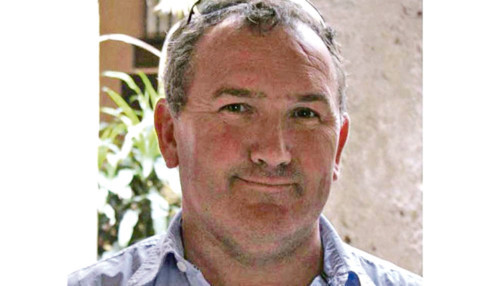
Doctor’s widow slams ‘shocking’ NHS care.
The wife of a doctor who died from cancer caused by asbestos has hit out at the NHS for the “shocking” way it treats sufferers.
Dr Andrew Lawson was diagnosed with deadly mesothelioma in early 2007. He was given just 12 months to live and warned by specialists he faced an agonising death.
But the consultant anaesthetist refused to accept the bleak prognosis and flew to America and the Netherlands to seek out treatment unavailable on the NHS.
The father-of-three, who got mesothelioma after being exposed to asbestos fibres while at medical school, died in February more than six years after he was predicted to.
Now his widow has slammed the poor advice and treatment given to other victims of the disease.
Juliet Cohen, also a doctor, said: “My husband survived lethal cancer for seven years only because he was a doctor. Andrew fought to live by going on medical trials and pushing for treatment rarely offered to mesothelioma patients. He refused to accept the bleak outlook of a year given to him at his diagnosis.
“So many patients are told to forget about treatment and told not expect to last a year. It is a shocking lack of hope to hand out to patients with this disease.”
Pioneering pain control specialist, Andrew, from North Berwick, was only 48 when the impact of mesothelioma forced him to retire in 2007. He spent his time investigating the disease and taking advice from colleagues all over the world.
He signed up for six different chemotherapy courses and underwent three operations. He also received treatment in the US and the Netherlands, which he said he could not find within the NHS.
“I knew where to look and who to ask,” he said. “It was clear to me that most NHS patients were simply not told about such trials.”
Juliet, who is head of the UK medical charity Freedom from Torture, believes all mesothelioma sufferers should be entitled to the best treatments available.
She says she has received letters from victims distressed they were overlooked for medical trials.
“Do not leave that consulting room without asking to be considered for any new trials or treatment,” she advised.
Julie MacDougall, daughter of another asbestos victim, the late MP John MacDougall, said: “The diagnosis my dad got was dire and gave him no hope.
“He ended up living for more than two years after getting on to a surgical trial.
“Sadly, most patients are sent away with bleak consultations, often given in a cold, inappropriate manner.”
The former Glenrothes MP contracted the cancer after working in a dockyard.
Dr Lawson is one of at least eight British doctors to have died from mesothelioma.
They include Glasgow GP Dr Audrey Finnegan, who passed away last year after allegedly being exposed to asbestos in junior doctors’ rooms in Glasgow’s Belvidere Hospital. The mum-of-three was awarded compensation in an out-of-court settlement.
Former GP Professor Kieran Sweeney died aged just 58 in 2009. His family claim he became ill after breathing in dust from asbestos pipe lagging at several Glasgow hospitals.
Mesothelioma can take 40 or 50 years to present symptoms, which is why victims are often given just months to live once they are diagnosed.

Enjoy the convenience of having The Sunday Post delivered as a digital ePaper straight to your smartphone, tablet or computer.
Subscribe for only £5.49 a month and enjoy all the benefits of the printed paper as a digital replica.
Subscribe